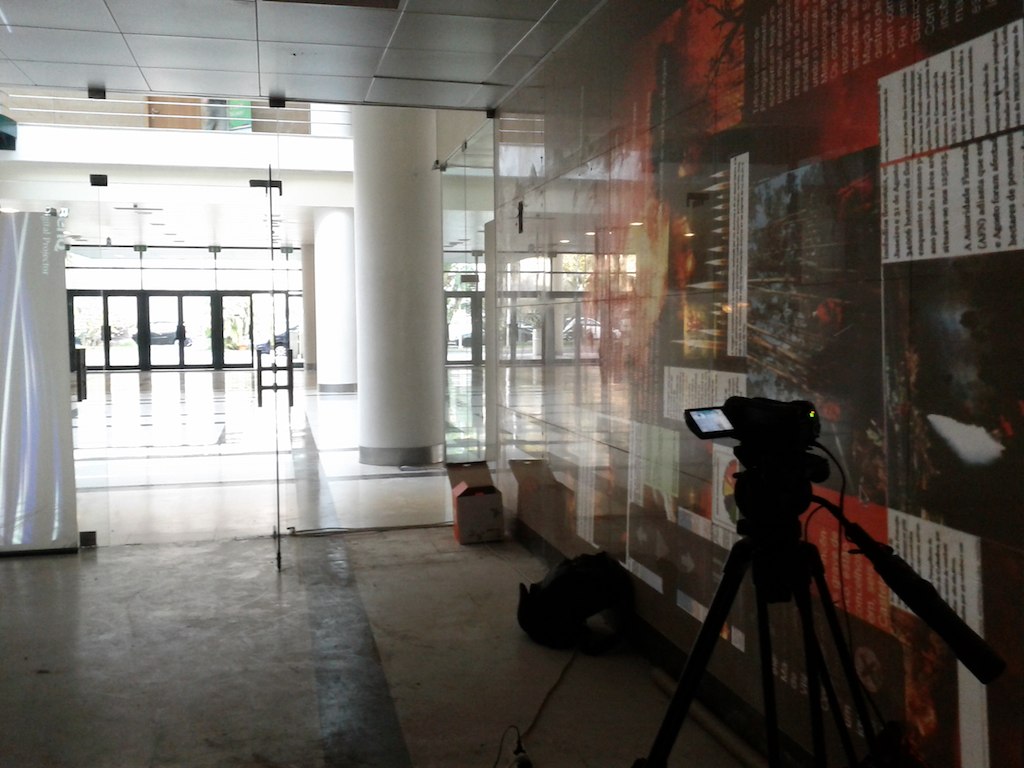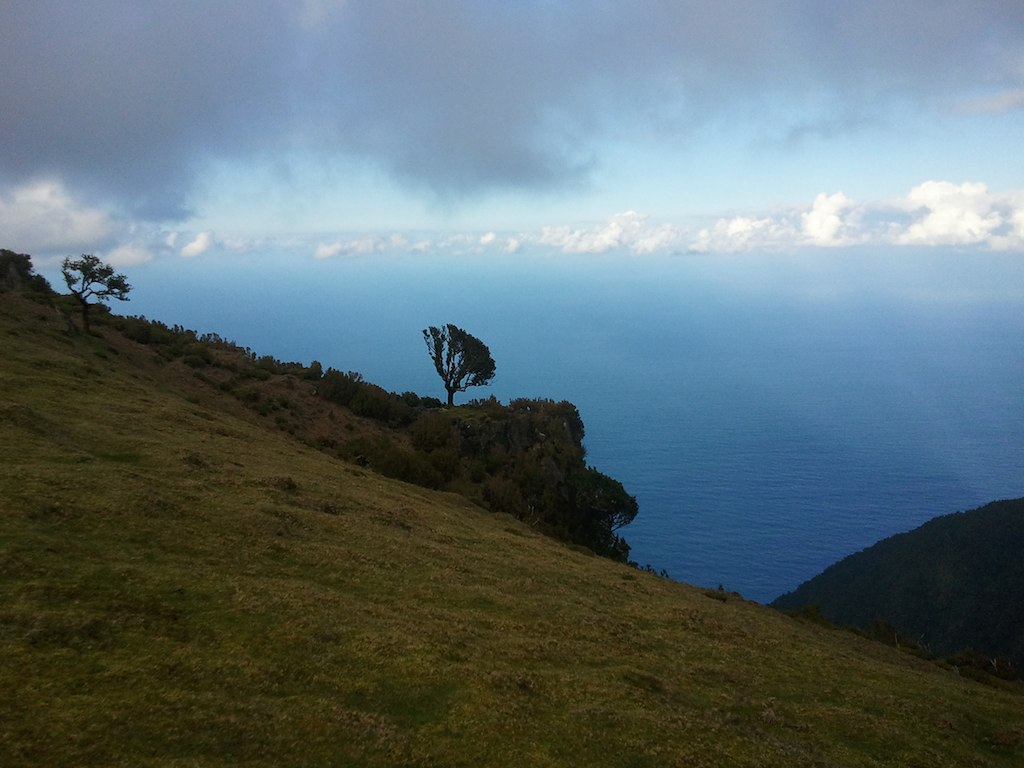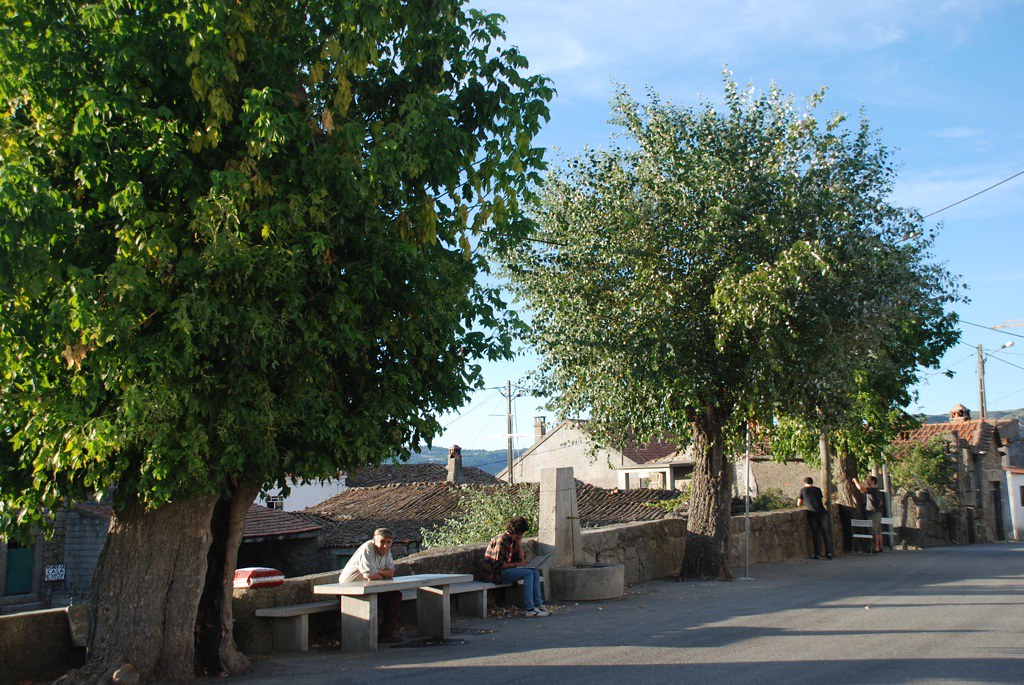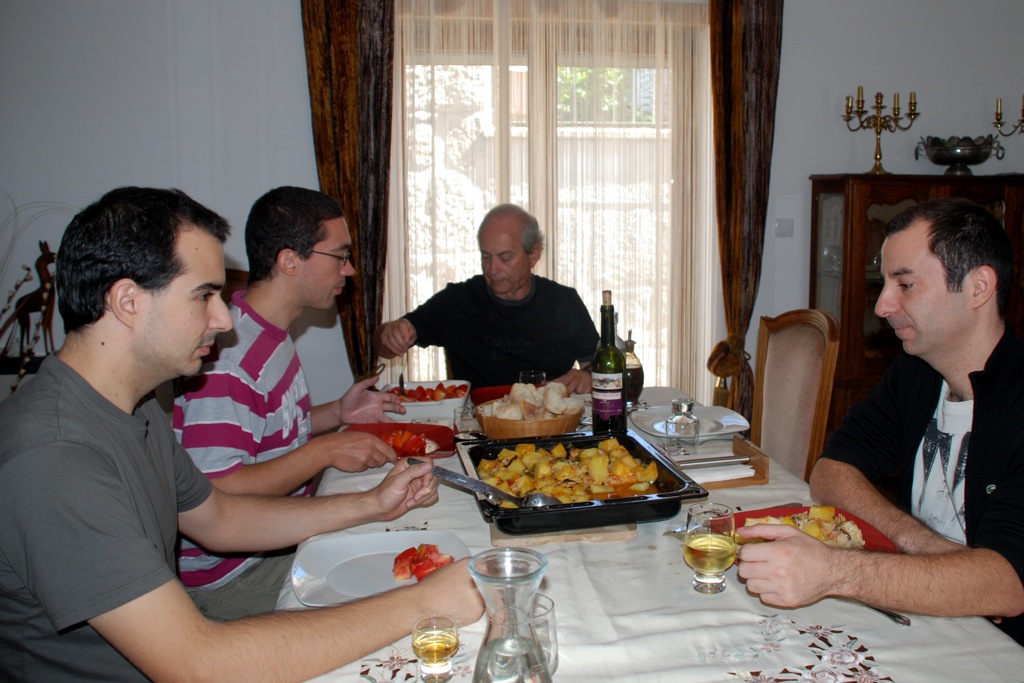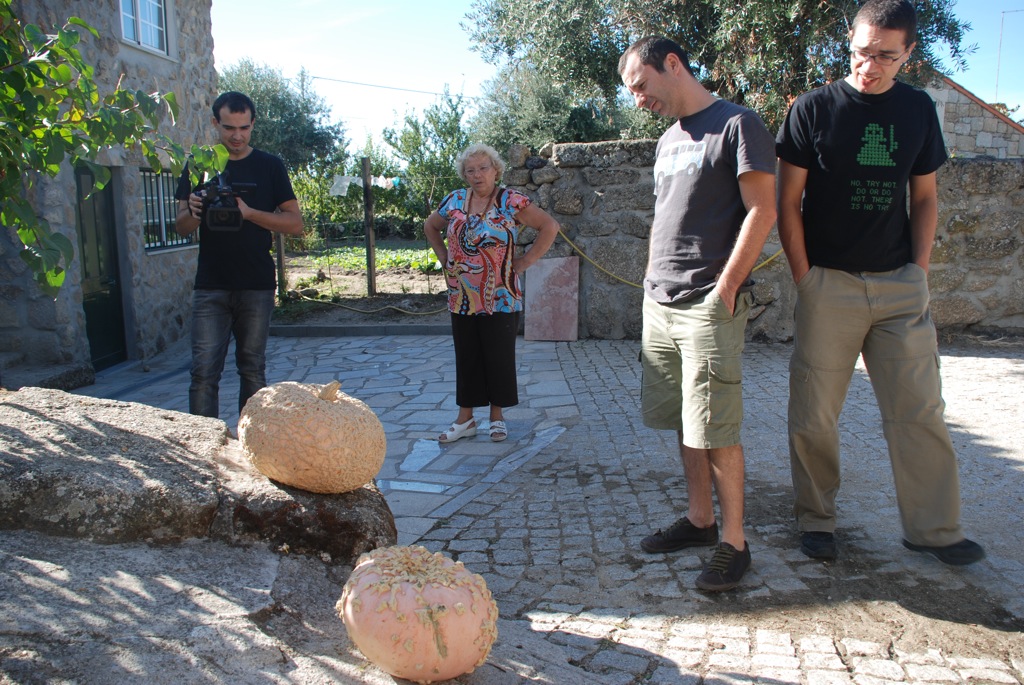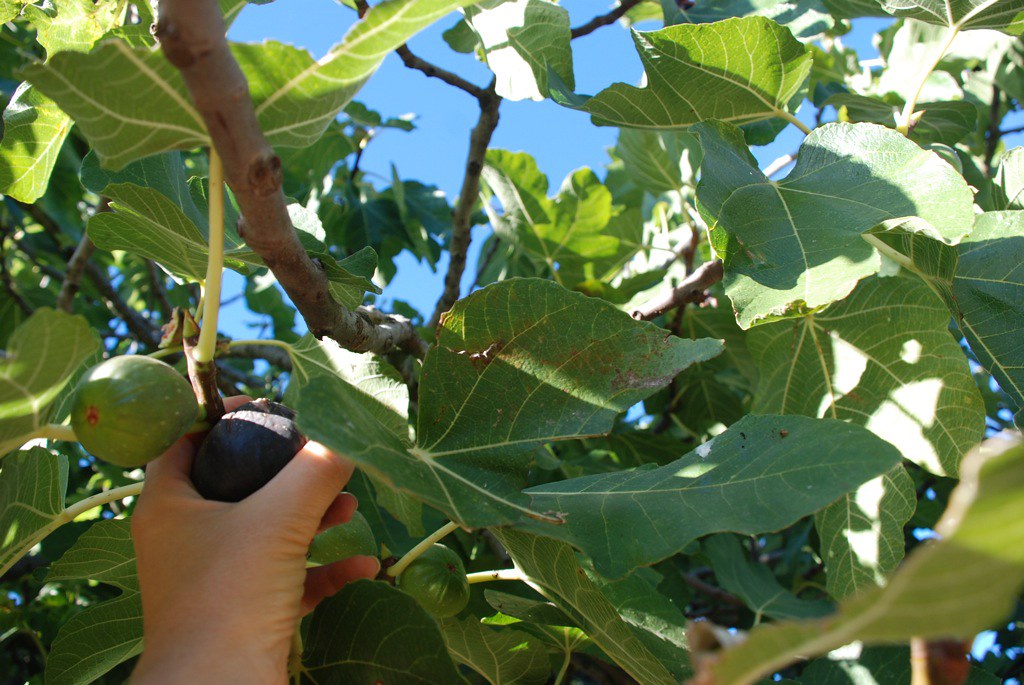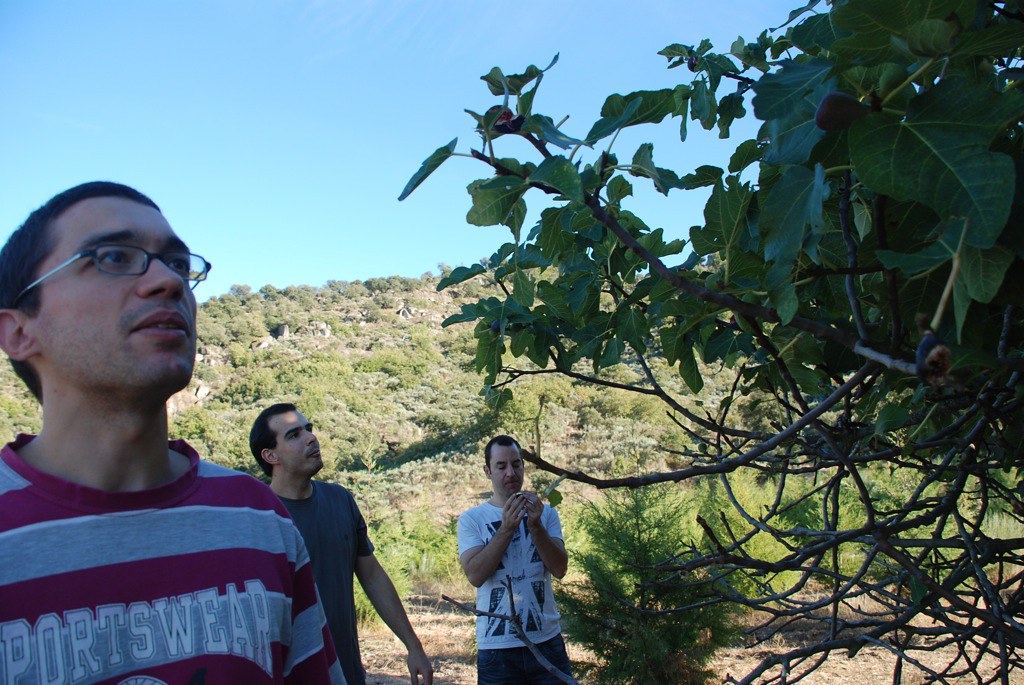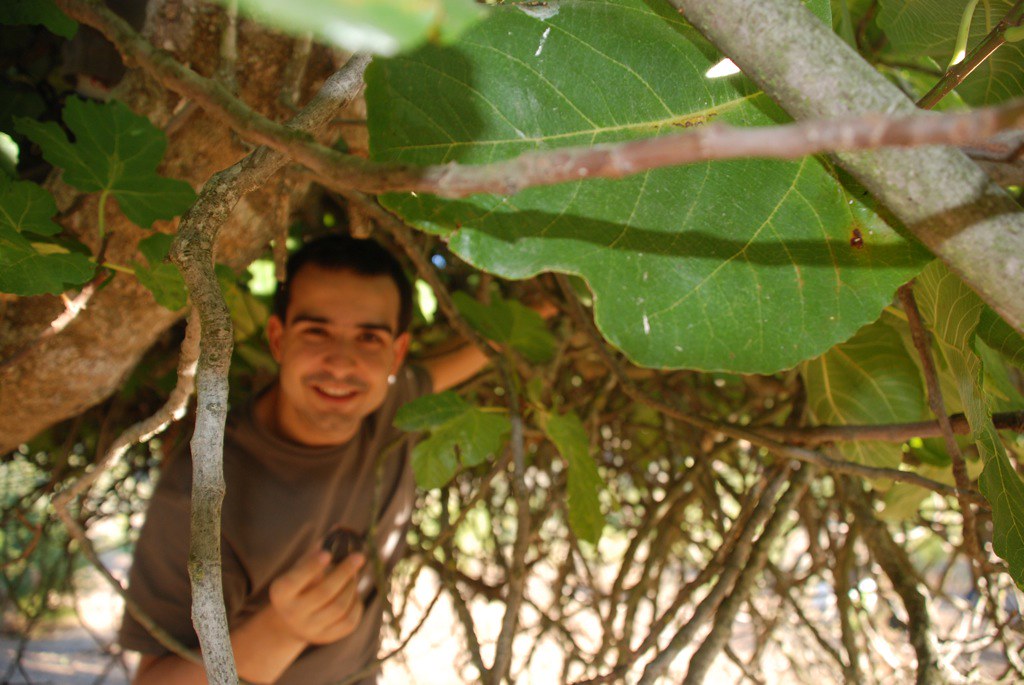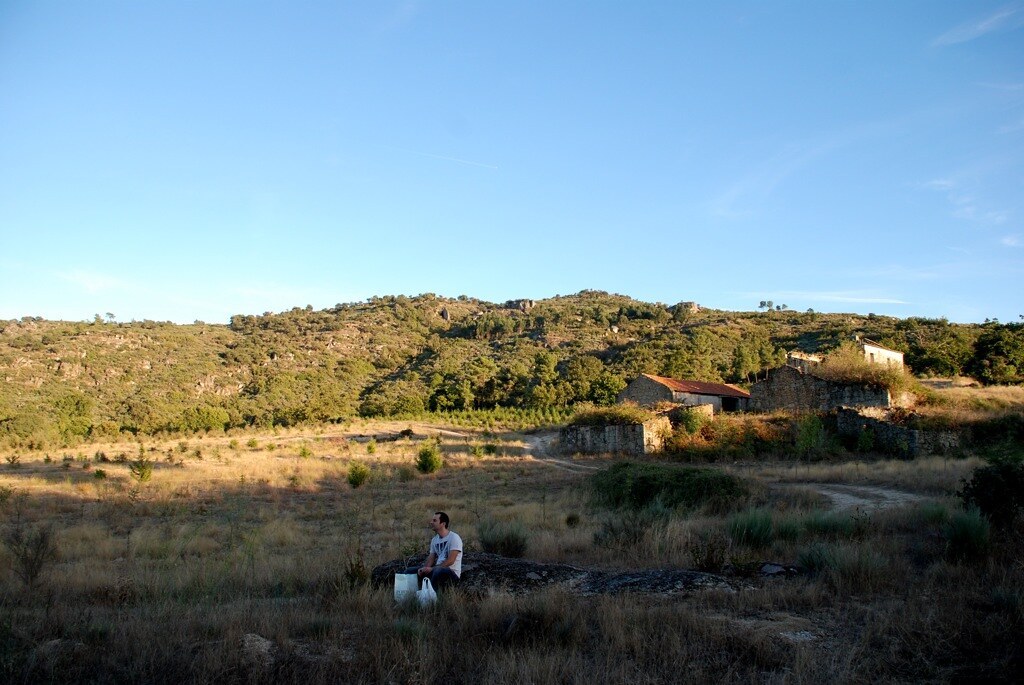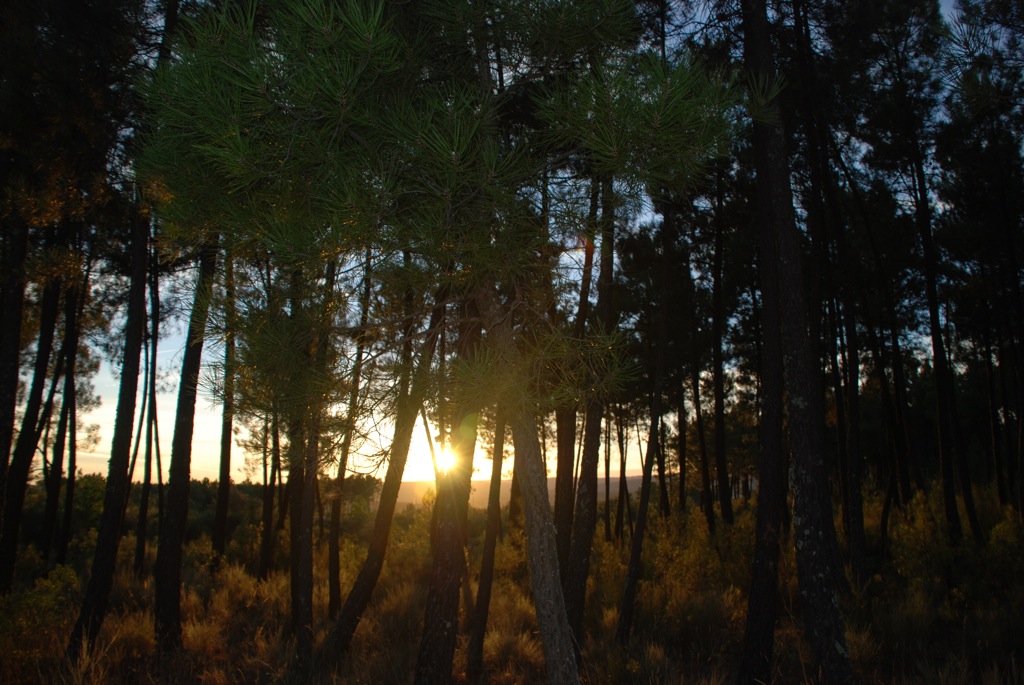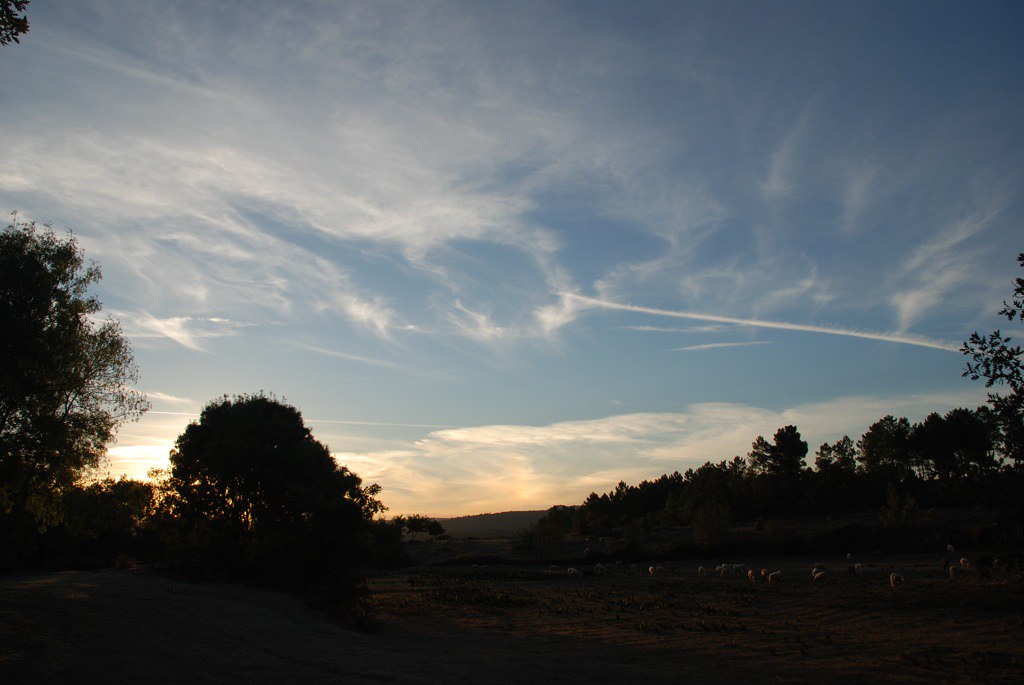Viewing posts for the category Local culture
ARTiVIS Dancing with Water
Posted by: Mónica Mendes in ARTiVIS Local culture WaterBodies 12 years, 10 months ago
Summer holidays are here and in search of a much needed break we headed out to the water inspired festival Danças~na~Água (Dances on the Water) and the charismatic Andanças that took place in the banks of the Mondego river, the largest body of water born in Portuguese lands, in its elite near the village of Ratoeira in the Celorico da Beira municipality. Co-organized by the municipality and the PéDeXumbo association, the festival premiered this year in the first days of August and brought together traditional music, dancing and local culture within the beautiful water-side setting – a lot of potential for ARTiVIS in the future and for further WaterBodies connections :)
The Andanças24 festival that followed happened over a 24 hour period between in a smaller edition of the well known Andanças festival, already in its 17th edition, also organized by PéDeXumbo. This smaller edition marked a year of transition for the festival, that left its classic setting in the Carvalhal village near São Pedro do Sul.
In practical terms though, both festivals kind of merged into a single event spanning the five days between 1 and 5 of August with lots of water themed activities from concerts to workshops and dances, along with riverside recreation and events.
After setting up tent on the the beautiful river banks and admiring the landscape bathed by the full moon, there was lots to do. Workshops filled out most of the daily activities and there were many different to choose from.
We started out with Luis Antero, whose work is covered in the WaterBodies projects, by participating in his field recording workshop. Besides learning about microphones and recording techniques we learned about the ethnographic value of field recording and immersed ourselves into the soundscape of the nearby Ratoeira village. We recorded water in many different forms, including the tales told by local inhabitants of how crop watering and river washing was like in the old days. Some of the recordings done at the workshop were used later by Luis in a concert and will likely surface soon as a collective composition in his Greenfield Recordings netlabel.
Later on that day, we learned how to build our own Ipu, a traditional Hawaiian percussion instrument built from a Calabash (a bottle-like gourd). The workshop was taught by the nice people from Hula Halau O Nunes from Benavente who led us through the process of cutting, hollowing out, washing and sanding the calabash and then taught us how to use it to play the music for a traditional Hula dance. They also gave us some calabash seeds so that we could plant them and make our own Ipus in the future.
This was not the only time during the event that we played an instrument made from a calabash. Later on the week we joined Nuno Patricio from Nação Vira-Lata in the venue's riverbank swimming pool to play water drums made from "water gourds" (a larger kind of gourd). It was a very refreshing workshop and we learned to use various water splashes as part of playing the instrument.
Other workshops included more relaxing offers like Tai-Chi and water Yoga but were mostly about dancing. From African tribal dancing to more traditional ballroom dancing (with the Mazurka being hands down the crowd favorite) there was room for Hawaiian Hula, street dancing, Brazilian Capoeira and traditional Portuguese and other European dances.
Another substantial part of the festival's day events consisted of water activities. The beautiful riverside provided ample opportunities for swimming around and the organization also provided free canoes and rafts, cable slides between the trees and into the water (with lots of tree climbing involved), a very challenging rope bridge between the banks and a transparent plastic ball that allowed you to roll around in the water.
Local culture was also present in the festival with lots of little tents arrayed on the riverside providing local food and drink specialties, arts and crafts. A special mention goes to the Maçal do Chão youth who brought homemade mead, pottery water birds (the festival's unofficial sound ex-libris) and took people in horseback rides along the river bank.
Another stand, by the largest Portuguese environmental organization Quercus, showcased DIY solar ovens that will be the topic of further investigation ;)
Concerts were another very important part of the festival. At the end of each day, a floating stage was set adrift in the middle of the river for a sundown concert, including the first one by Luis Antero where participants were invited to use blindfolds and listen to him combining Portuguese guitar and field recordings (some of which we had recorded in his workshop earlier) into an ear opening experience.
During the night, the main concerts showcased Portuguese bands that took traditional music and sounds and gave them their own spin. From Nuno Patricio's and Nação Vira-Lata's water drums, to the traditional instrument dust raising explorations by Galandum Galundaina to the more pop-rock infused motions of Uxu Kalhus and the good nature and fun rhythms of Toques do Caramulo there was a lot of dancing and good music to be enjoyed.
The nights were filled with ballroom dances that were introduced during morning day workshops with live music that allowed everyone to try out the moves they had learned on the dance workshops earlier in the day.
The festival closed off with a couple of fantastic concerts. First, Celina da Piedade showed her virtuosity in playing the "concertina" with a selection of traditional songs arranged in a festive mood for everyone to dance to. Then came Nação Vira-Lata who took off in the floating stage and rocked everyone off it with their massive live percussion power.
In the end we had the chance to chat a bit with municipal organizers and give them our feedback about the venue and the event. Although tired, they seemed happy with the festival and assured us that even if Andanças moves on to another location next year, Danças na Água will bring water, dancing and local culture back to the banks of the Mondego.
See you and more WaterBodies featured projects there?
~
* Read more at the Danças-na-Água festival site & Facebook page
See the photo galleries at Andanças and Danças na Água
~
ARTiVIS Artist in Residency with SINAIS project at MITI/UMAD
Posted by: Mónica Mendes in ARTiVIS Implementation Local culture PhD research Play with Fire Residency 13 years, 5 months ago
The ARTiVIS project is participating in an Artist in Residency program at the University of Madeira in close collaboration with the SINAIS eco feedback project team.
We will share ongoing developments in our research work that could be of interest to the SINAIS project, namely the design of a networked open hardware forest surveillance kit, and Play With Fire, a public interactive installation that engages participants with live video of forests and generative real-time graphics overlays.
The proposed goals of this Artist in Residency program are:
- Scout Laurissilva sites, and test the potential for setting up an ARTiVIS surveillance kit on site for storing data and providing a live feed of the landscape to be used in further developments.
- Bridge Play with Fire with SINAIS by setting up a version of the installation at a public venue in Madeira . This setup would allow us to design and carry out user experience evaluation with the support of the SINAIS team
- Collaborate with the SINAIS team in order to share insights and data from our work and receive valuable feedback from them. This would lead to brainstorming the concept and design of a public installation for SINAIS eco feedback.
- Generate publications, submissions for art venues and disseminations of results. We propose that these tasks be completed over a period of six months comprising two residency periods at Madeira and a research and development period in the mainland.



The first residency period occurred in the week from 23 to 29 of January and involved:
- Contacting local Laurissilva forest spots, scouting places to install test equipment.
- Setting up a version of the Play With Fire installation for testing at the Tecnopolo.
- Meeting with SINAIS group to present ARTiVIS and Play With Fire.
- Evaluating the installation design in collaboration with HCI experts from SINAIS.
- Brainstorming with the SINAIS team about their eco-feedback public installation.
- Working on location testing the Laurissilva forest setup and Play With Fire installation, preparing for the upcoming exhibition at Pavilhão do Conhecimento.
- Documenting and planning development objectives for the July residency period.
We had a great time in Madeira with the SINAIS team and we are already working on improving Play With Fire and testing the components for the DIY forest surveillance kit for the second residency period around July.
Saberes & sabores do Maçal do Chão » Sprint AZ
Posted by: Mónica Mendes in AZ labs AZ sprint Hug@ree Interactive installations Local culture PhD research 14 years, 9 months ago
NOTE: this post was intentionally reported in Portuguese to enhance local cultures by sharing with the people at Maçal do Chão, where this event took place. For the automatic translation – with all the virtues & limitations we know –, click here and have some extra fun ;)»
---
Estes registos são como que um apontamento paralelo inspirado nos saberes e sabores locais, que ora estreia com Maçal do Chão, uma pequena aldeia na região da Serra da Estrela, a propósito da realização do sprint Abraçaum@rvore que propus aos labs AZ.
A proposta do património natural envolvente de Maçal do Chão no contexto do projecto de investigação RTiVISS tem origem no facto de ser uma das áreas de maior risco de incêndios florestais, onde o meu pai, Fernando Mendes, tem vindo a desenvolver um projecto de reflorestamento em mais de uma centena de hectares que se estendem pelas Quintas das Bocas, de Santo André, e das Mestras, incluindo o "talegre" no cimo do monte, um marco geodésico a assinalar o ponto mais alto daquela zona.Trata-se de uma localidade situada na região da Serra da Estrela, no interior Norte de Portugal, sob o enquadramento geográfico do distrito da Guarda e do Concelho de Celorico da Beira, onde os incêndios florestais têm devastado drasticamente os seus singulares tons de verde – uma tendência decrescente nos últimos anos devido a projetos de reflorestamento local e os trabalhos de manutenção de limpeza.
Reunem-se assim as condições de acessibilidade numa propriedade privada disponível para os testes piloto a realizar e para a sua inclusão como referência a um não-lugar.
As espécies de ávores que crescem nestas florestas incluem pinheiros, azinheiras, castanheiros, cerejeiras, plátanos, cedros.
Houve oportunidades de saborear os produtos locais, desde o reconhecido queijo da serra, ao chouriço, pão de trigo, e frutos da época, especialmente os figos e uvas em estação de vindimas, e ainda as ameixas e as amoras que restavam do Verão. Como não há tempo para tudo, as perfumadas "bravo esmofo"autóctones da Beira Alta que tínhamos à nossa espera nas macieiras do Ribeiro do Salto terão que ficar para outra altura... ai, ai.
O nosso extremoso anfitrião e autor do projecto de reflorestamento que deu mote a esta investigação, Fernando Mendes, assumiu com excelência o papel de chef, preparando-nos deliciosas refeições que incluem: javali caçado na floresta que reportamos com acompanhamento de batatas novas da aldeia, bacalhau no forno regado com o imaculado azeite de acidez "0" das suas oliveiras, e ovos caseiros da vizinhança.
Com este programa gastronómico em apenas um fim-de-semana, claro está, sabotou completamente os planos iniciais, que eram 48h apenas com breves pausas, em ritmo de sprint AZ. Deixo este comentário em jeito de confissão para expressar o meu propósito inicial, já que não tive quorum, pois as propostas do meu pai suscitaram a incondicionada adesão de todos os outros membros.
Teve como cúmplice a minha tia Graciosa, que fez a sopa de feijão verde e a de couve, ambas com legumes das hortas locais, e também as saladas com tomate "coração de boi", o melhor de que há notícia ;)
A complementar estas divagações pelos sabores da horta, levou-nos a observar umas texturas que se assemelhavam a um rendilhado:
... intrigante para abóboras, há que reconhecer!
O Ricardo que, pensava eu, iria manter a ideia espartana de trabalho contínuo na sua qualidade de coordenador dos sprints, limita-se a afirmar: "épico!"
...Bom, com uns figos desta natureza, não há quem resista :)))
Para além de ter tirado os geeks do seu habitat natural, o passeio para registos até à Quinta de Santo André e Quinta das Bocas teve ainda momentos de pausa para apanhar amoras silvestres, colher uns sacos cheios de figos suculentos e para fechar os olhos e contemplar a doce melodia do canto dos pássaros e de dezenas de chocalhos de um rebanho que pastava ali perto em contraste com o silêncio pacífico que nos rodeava.
E o final feliz é que, além de tudo isto, cumprimos os objectivos a que nos tínhamos proposto neste sprint: a versão do sensor capacitivo resulta, o software está esboçado no openframeworks, e as tarefas subsequentes que requeriam a utilização de equipamento que não estava ao nosso alcance nessa altura, como os xbees e as tais resistências de 10Mohm, ficaram definidas para conclusão – muito, muito em breve :))))










